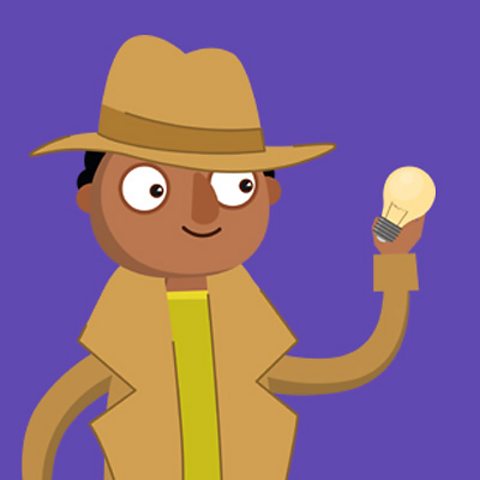Lesson resources
This page contains all of the essential documents you will need to conduct the Power investigation.Scroll down for the how-to film, lesson plan, lesson resources, and student resources.
Don't forget, in addition, we also prepared a handy classroom presentation you can use in class and other further resources to help you to deliver the investigation. Links to these can be found in the 'Where next?' section below.
How to do the Power investigation
Watch this short film taking you step-by-step through how to perform the Power investigation.
Narrator:
For this investigation you will need, clipboard; power health check table; electric detective worksheet; electricity record sheet; thermometer; pencil. This investigation is split into two parts. In week one you'll discover how much power your school uses. In week two, your challenge will be to find ways to save as much power as you can.
Narrator:
Week one - Become an Electric Detective. To begin this two week challenge you'll need to become an electric detective and inspect your school's current electric power use. Think about which devices use electricity. Note down here they are. You must not touch electrical equipment without your teacher's permission. Are those devices on, off or on stand-by? Do these devices needto be on? While you're investigating your school, what other power wasting problems can you detect? Did you see open windows even when the heating is on? Hot taps left on? Draughts from doors? Write down all your findings in your table.
Narrator:
Next, with your newly found detective knowledge, in your class discuss the general use of power within your school.
Narrator:
As a class, complete the power health check table. Your final score will tell you how efficient your school is.
Narrator:
Electricity readings. An electricity meter keeps a record of how much electricity is used. Electricity meters measure electricity used in kilowatt hours. Throughout the investigation you will need to read the electricity meter twice a day. Read the meter once in the morning and once in the afternoon to calculate how much electricity the school uses in a typical Monday to Fridayschool.
Narrator:
Electricity meters can be found in numerous places and every school is different. Ask your site manager or caretaker to help you locate it.
Narrator:
It's very important that every time you read the school's electricity meter you should have a teacher or caretaker present. If this is not possible, or if the electricity meter is too high or in an unsafe area, then ask an adult to take a photo of the meter for you to view it safely. Each time the electricity meter is read, take a photo for your records.
Narrator:
Reading an electricity meter can be difficult as they all look different. Use the terrific scientific electricity meter guide to point you in the right direction.
Narrator:
At the end of every day subtract the morning reading from the afternoon reading to calculate the daily total electricity usage.
Narrator:
Temperature and weather. Every time you read the electricity meter you'll also need to read the temperature inside and outside the school and note down how cloudy it is, to see if there's a link between energy use within the school and the weather.
Narrator:
To accurately read the temperature hold the thermometer to your eye level. Carefully look up at the sky. Is the sky clear? Are there some clouds or lots of clouds? Record what you see. Remember, never look directly at the sun.
Narrator:
Week two - Switch Twitch. In week one you identified ways of saving electricity. It's time to put these ideas into practice. Remember, do not touch electrical equipment without your teacher's permission. Throughout the second week work together to save as much electricity as possible. Think about which devices could be turned off. Are your school's windows shutwhen the heating's on. Do all lights need to be switched on throughout the day? As you implement these power saving ideas you should start to see that your daily electricity usage is less than in week one.
Narrator:
Review - repeat the electric detective activity.
Narrator:
At the end of week two, complete the electric detective worksheet by investigating your school's power usage once more. Calculate the difference in electricity usage between week one and week two. Did you see a change in your school's electricity consumption between week one and week two? Do you know what caused this change? Are you a successful electric detective?
Lesson plan
This is a quick-start two page lesson plan with an overview of activities, resources and timings. See the teacher resource for additional detail.
Teacher resource
This is the full teacher resource with detailed information on how to complete the investigation, including background information, starter activity and investigation instructions.
Student resource
These are the worksheet and printable hand outs which will help you deliver the classroom activities.
SEND resources
We have adapted our teaching resources for use in an Special Education and Disability environment.
[SEND resources]/teach/terrific-scientific/articles/z6wf92p)


